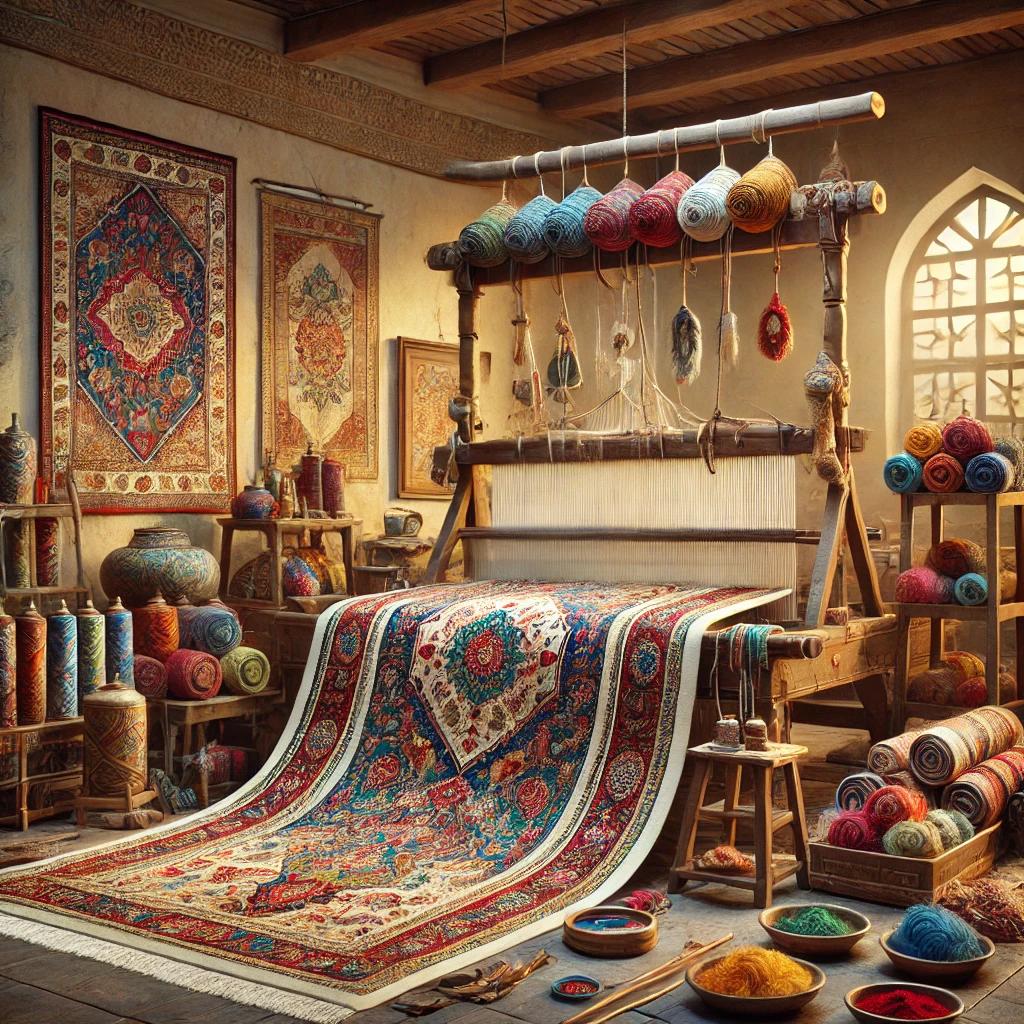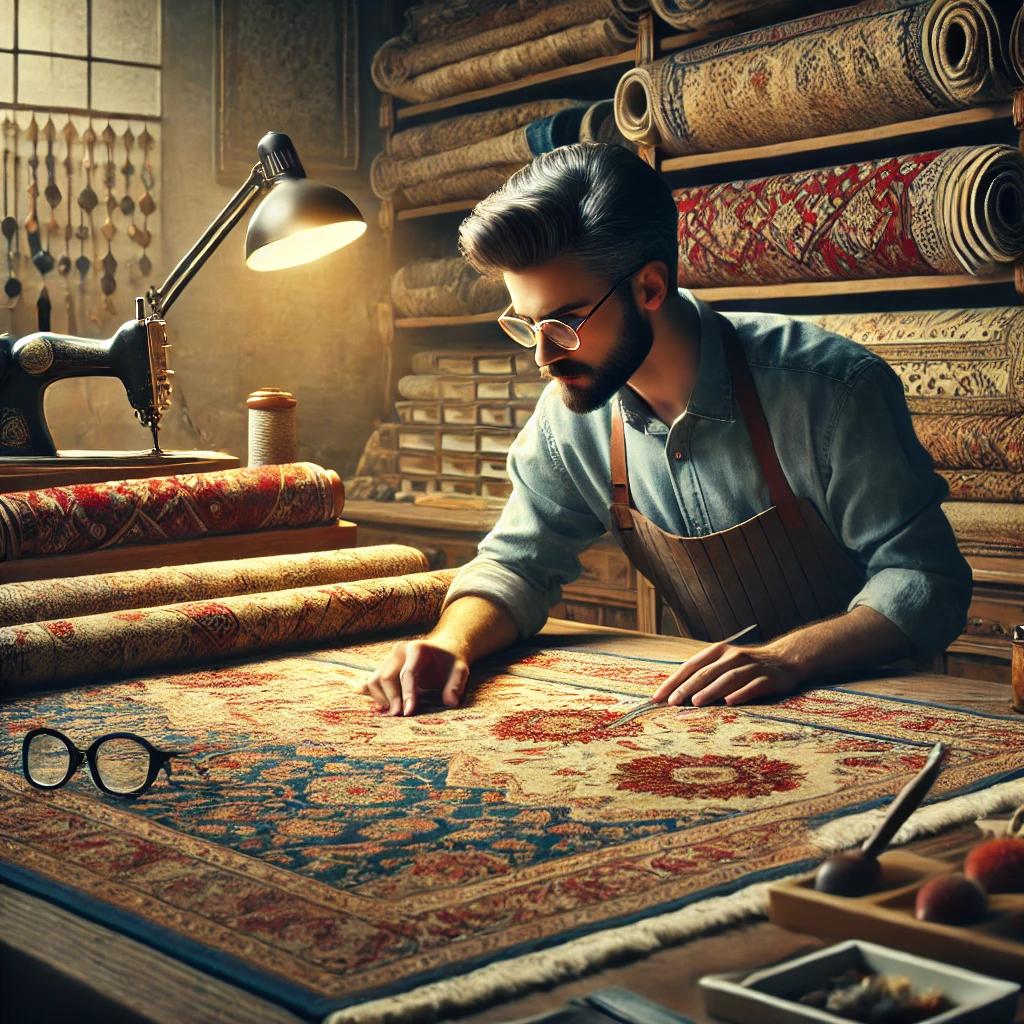
The Rich Narrative of Persian Rugs History
Estimated reading time: 8 minutes
Key Takeaways
- Persian rugs hold thousands of years of Iranian culture within their designs.
- The craft reflects a deep intertwining of art, history, and societal values.
- Regional variations showcase distinct aesthetic preferences and techniques.
- Preservation efforts sustain traditional methods while embracing some modern innovations.
- Persian rugs are now viewed globally as symbols of luxury and craftsmanship.
Table of contents
- Origins of Persian Rugs
- Evolution of Persian Carpets
- Iranian Carpet History and Regional Variations
- The Persian Loom: Foundation of Craftsmanship
- Materials Matter: The Role of Wool in Persian Rugs
- Cultural and Artistic Significance
- Trade and Global Influence
- Preservation and Modern Developments
- Conclusion
- Additional Resources
The history of Persian rugs is a captivating narrative intertwined with thousands of years of Iranian culture. Persian rugs are not merely functional items stationed on the floor; they represent a blend of exquisite art, skilled craftsmanship, and deep historical significance. With their intricate designs, vibrant colors, and rich symbolism, Persian rugs have become coveted treasures worldwide. This blog post will delve into the origins, evolution, regional variations, materials, cultural significance, global influence, and modern developments surrounding the history of Persian rugs.
Origins of Persian Rugs
The history of Persian rugs dates back to ancient Iran, with archaeological evidence suggesting rug-making as early as 2500 BCE. One of the earliest influential civilizations was the Achaemenid Empire (c. 550–330 BCE), where the art of weaving began transitioning from simple mats to more decorative and intricate rugs. Initially crafted by nomadic tribes, these textiles served practical purposes, providing warmth and comfort while often embodying symbolic patterns drawn from nature and tribal life.
An outstanding example of ancient craftsmanship is the Pazyryk carpet, which dates to the 5th–4th century BCE. Discovered in Siberia, this carpet showcases advanced weaving techniques and complex designs, reflecting the artistry of the era. The intricate patterns of the Pazyryk carpet have provided scholars valuable insight into early Persian weaving traditions.
Evolution of Persian Carpets
The persian carpets history reflects a continuous journey of innovation and refinement, heavily influenced by the political, economic, and cultural tides of each era. From ancient Achaemenid and Sassanian influences to the Islamic conquests, Persian rug-making evolved through various challenges and transformations.
A pivotal moment in this evolution came with the arrival of the Seljuk Turks in the 11th to 12th centuries. Different designs and weaving methods surfaced during this era, enriching Persian rug-making’s artistic palette. The Safavid dynasty (16th to 18th centuries) marked the artistic peak, with royal workshops emphasizing artistry and intricate craftsmanship. Innovations such as new motifs, dyeing advancements, and intricate patterns opened doors for broader international appeal, elevating Persian rugs to high art pieces coveted worldwide.
Iranian Carpet History and Regional Variations
The iranian carpet history showcases a vast range of regional diversity. Throughout Iran, different provinces developed distinct weaving techniques and aesthetic preferences:
- Tabriz: Renowned for its intricate medallion designs and high-quality craftsmanship.
- Isfahan: Famous for elaborate floral patterns, intricate detailing, and vibrant color palettes.
- Qom: Specializes in luxurious silk carpets, known for their fine knotting and vivid colors.
- Shiraz: Features tribal motifs and rustic charm, often made of durable wool.
Each region enhances the diversity of Persian carpets, as local cultural influences, weaving techniques, and available materials shape their unique character. This regional variation contributes significantly to the tapestry of Iranian heritage, providing a fascinating glimpse into diverse artistic traditions.
The Persian Loom: Foundation of Craftsmanship
At the heart of Persian rug-making lies the Persian loom, a critical tool that has evolved over centuries. Traditional looms come in two primary forms—vertical (warp-weighted) and horizontal. The vertical loom, allowing weavers to craft large, complex carpets, has been essential for producing distinctive patterns and styles.
Over the years, advancements in loom technology have refined weaving techniques while still preserving the traditional hand-knotting methods. These innovations facilitate increased accuracy and consistency in the design, allowing artisans to create stunningly detailed carpets that echo the artistry of their predecessors. Hand-knotting, especially using asymmetrical and symmetrical knots, remains a hallmark of Persian craftsmanship, ensuring each piece embodies a sense of authenticity and heritage.
Materials Matter: The Role of Wool in Persian Rugs
When discussing the wool in Persian rugs, it is essential to highlight its significance. Wool is favored for its durability, texture, and excellent dyeing properties, making it a superior choice for creating long-lasting, vibrant carpets. The best quality wool often originates from highland sheep, where climatic and nutritional factors contribute to the fibers’ softness and resilience.
The quality of wool directly impacts a rug’s wear and longevity, making it a valuable determinant of market value. In addition to wool, silk and cotton are also utilized in specific regions, particularly for finer, delicate designs that add layers of richness to the artwork. Thus, the choice of materials is integral to the integrity and beauty of Persian rugs.
Cultural and Artistic Significance
Exploring the cultural significance and artistic meaning of Persian rugs reveals how deeply they are woven into the fabric of Iranian identity. Each design often encapsulates rich symbolism, telling stories that resonate with the viewers. Iranian culture interprets these designs as reflections of historical narratives, religious beliefs, and societal values.
Rugs hold a highly esteemed place in traditional Iranian society, often gifted during significant life events such as weddings or religious ceremonies. Beyond their functional use, Persian rugs are considered status symbols, elevating them to a cherished part of global art markets. They embody the legacy of craftsmanship and artistry that have attracted admiration across generations.
Trade and Global Influence
The trade history of Persian rugs is rich and multifaceted, with these exquisite pieces regarded as valuable commodities in both historical and modern markets. Rugs gained prominence not only in Iran but also across Europe, Asia, and the Middle East throughout centuries. During the Medieval and Victorian eras, Persian carpets evolved into highly sought-after items, with international demand significantly shaping local designs.
As foreign markets embraced Persian rugs, innovations in aesthetics and functionality emerged, driven by external tastes and preferences. This cross-cultural exchange resulted in a global appreciation for Persian artistry, cementing its place in the world as a symbol of luxury and exquisite craftsmanship.
Preservation and Modern Developments
Today, efforts toward preservation focus on maintaining traditional rug-making techniques and recognizing their cultural significance in modern society. With technology continually evolving, innovations in materials and weaving processes have emerged—blending traditional artistry with modern aesthetic preferences.
These adaptations play a crucial role in keeping Persian rugs relevant in contemporary markets while ensuring that the rich iranian carpet history is honored and celebrated. Through the preservation of time-honored techniques and an embrace of some modern methods, artisans continue to keep the tradition alive for future generations to appreciate.
Conclusion
Understanding the persian rugs history enriches our appreciation for these masterpieces beyond mere decoration. They represent a profound melding of art, culture, and identity that has endured for centuries. This enduring legacy of Persian carpets speaks volumes about the craftsmanship and cultural heritage of Iran, inviting people from all over the globe to recognize and celebrate their intricacies and beauty. As we delve deeper into the world of Persian rugs, we strengthen connections to a history that continues to inspire creativity and admiration today.
Additional Resources
For readers eager to explore further aspects of iranian carpet history, here are some excellent resources and readings that provide enriched insights:
- Historical studies and reports
- Museum archives showcasing Persian rugs
- Cultural blogs that discuss modern practices and the lasting impact of traditional weaving
For more detailed explorations, consider visiting:
- Denver Area Rug Cleaning
- Catalina Rug
- Nazmiyal Antique Rugs
- The Art of Persian Rug Weaving: A Tradition Worth Preserving
- Spotting Quality: Tips for Evaluating Handmade Rugs
Through these resources, readers can uncover layers of history and meaning woven into each Persian rug, enriching the understanding of this timeless art form.


